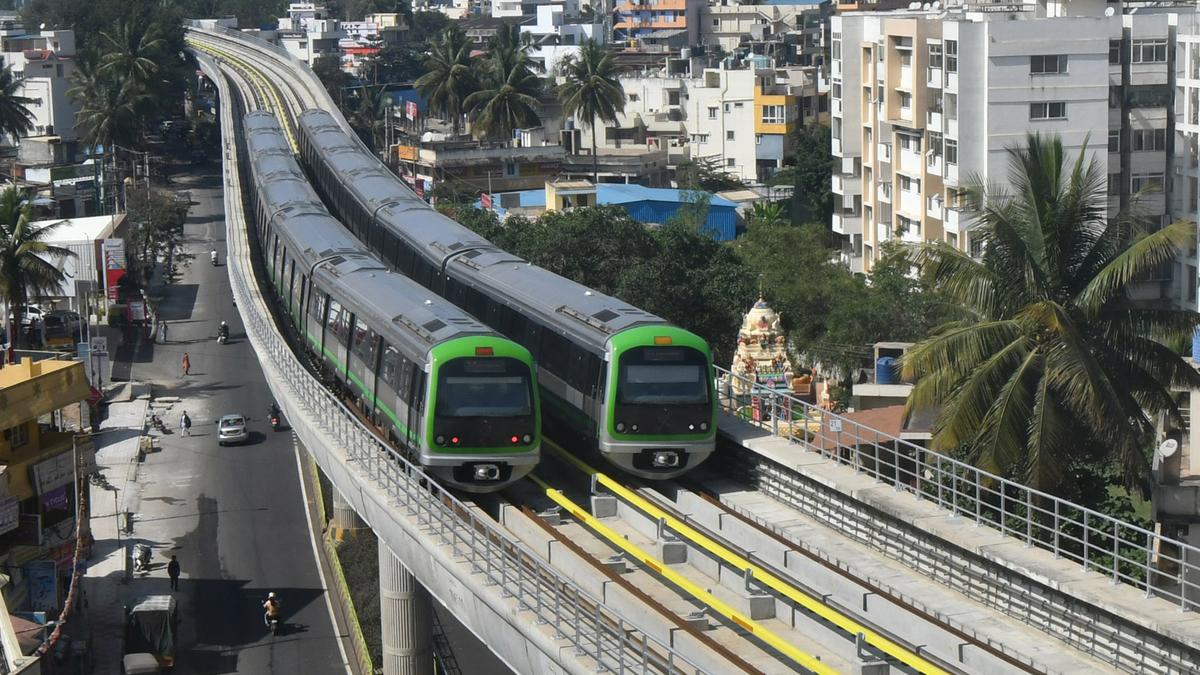
Bengaluru’s Namma Metro: India’s priciest transit Premium
The Hindu
Bengaluru Metro fare hike sparks public outrage, making public transport unaffordable, leading to decreased ridership and political disputes.
Mahindra Kumar, a daily metro rail commuter between Baiyappanahalli and Cubbon Park, used to pay ₹19 earlier for a one-way ride. Now he pays ₹28. “I am paying ₹9 more for each trip, which adds up to ₹18 daily and over ₹500 a month. It may not seem like much to some, but for regular commuters like me, it’s a burden,” he says.
Public transportation in Bengaluru is becoming increasingly expensive, not just the metro but also BMTC buses, says Kumar. “With rising travel costs, commuting within the city is becoming a financial strain,” he said.
Kumar’s story is similar to that of lakhs of Namma Metro passengers who were in for more disappointment as the Karnataka High Court, on April 1, declined to intervene in the Bangalore Metro Rail Corporation Limited’s decision to increase metro fares, dismissing a Public Interest Litigation petition that argued the hike amounted to a “breach of promise” as it exceeded previously stated limits.
The fare hike — the first revision in over seven years — has made Namma Metro the costliest transit service in India among the major cities with metro services. The revised fares, effective February 9, saw the maximum ticket price go up by 50%, from ₹60 to ₹90. The first fare revision since the metro began operations in Bengaluru in 2011 took place in 2017.
The fare increase, implemented on February 9, in some cases, approached 100%. Amid public outrage, Karnataka Chief Minister Siddaramaiah intervened on February 13, instructing BMRCL Managing Director M. Maheshwar Rao to roll back “abnormal” fare hikes. Following this, BMRCL adjusted the increase, limiting the maximum stage-wise fare hike to 71%. However, the base fare and the highest ticket price remained unchanged at ₹10 and ₹90, respectively.
Under the revised pricing, the maximum fare rose from ₹60 to ₹90, while the minimum fare for the shortest distance (0-2 km) remained at ₹10. The fare for the 2-4 km distance increased from ₹15 to ₹20, while those travelling beyond 30 km now have to pay ₹90. The revised fares were implemented on February 14, with some commuters noticing reductions of ₹9 to ₹10 on certain routes.
Further aggravating commuter concerns, BMRCL discontinued QR code-based fare discounts, restricting them solely to smart card users. Even for them, the discount has been reduced to 5%. Additionally, the minimum balance required on smart cards was raised from ₹50 to ₹90. However, a 5% off-peak discount remains available, bringing the total discount to 10% for those travelling outside rush hours — before 8 a.m., between 12 p.m. and 4 p.m., and after 9 p.m. on weekdays. A flat 10% discount is also applicable on Sundays and national holidays.

When reporters brought to her notice the claim by villagers that the late maharaja of Mysore Sri Jayachamaraja Wadiyar had gifted the land to them, Pramoda Devi Wadiyar said she is not aware of the matter, but sought to assure people that no effort will be made to take back the land that had been gifted by the late maharaja.





















 Run 3 Space | Play Space Running Game
Run 3 Space | Play Space Running Game Traffic Jam 3D | Online Racing Game
Traffic Jam 3D | Online Racing Game Duck Hunt | Play Old Classic Game
Duck Hunt | Play Old Classic Game










